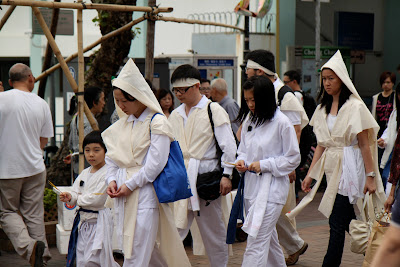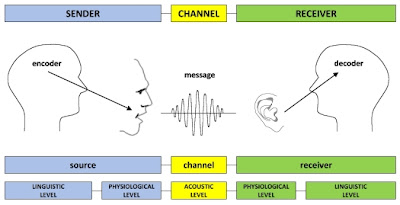For this week's lecture on Photojournalism, we are required to identify and outline five fundamentals of journalism ethics.
Photojournalism became an important part of our lives and we are dependent on them to tell the story visually instead of with words. We as viewers perceived photographs as the unalterable truth. Therefore professional photojournalists have an obligation to continue to be ethical as they are upholding a level of public trust that cannot be breached. If such responsibilities are accomplished, photojournalists will earn the respect of their viewers, colleagues, sources and themselves.
Firstly, in the age of of digital cameras, photo manipulation has become more common. Doctoring photos has been around since the invention of photography (Lowrey, 2003). Presently the issue whether a photo has been manipulated is no longer significant but of how much it change the original image that the truth has been distorted completely. Manipulating images can have serious social ramifications. During the O.J. Simpson trial in 1994, Time magazine received widespread criticism for manipulating a mug shot of O.J Simpson to make him look darker and more menacing (Hunt, 1999). Time magazine was accused of pursuing a racist agenda and presupposing Simpson's guilt. The magazine's reputation was badly tarnished by the controversy and it also shed light into the need for image integrity in photojournalism. In 2001, a LA Times photographer covering the war in Iraq was also fired for using Adobe Photoshop to combine two photos (Smith, 2005). When we correct, manipulate and enhance images, it is imperative to deal with questions of ethics, which are a set of moral principles or values or conforming to accepted professional standards of conducts. Today, manipulating an image is a mouse click away and some images are transformed into unique artworks which are often indicated. However digitally altering the content of a photograph by subtracting elements that change the message or meaning of the picture or cropping out damage or blurring critical information is the line that photojournalists must not cross. Therefore image manipulation should NOT be done with the intent to deceive the viewers or misrepresent subjects.
 |
| Two different copies of the same mugshot of O.J. Simpson. The Newsweek cover is the original mugshot, whereas the Time cover is digitally manipulated. |
 |
| The first recorded case of photo manipulation in the early 1860s when a photo of Abraham Lincoln was altered using the body from a portrait of John. C. Calhoun. |
I personally feel that some editing is fine. If any major editing is done to a picture this should be noted when the picture is presented. Below are photos of me standing in the background of Burj-Al-Arab hotel in Dubai. A hotel staff snapped this quick photo of me. Anyway, I was not happy with this image because the photo turns out dark. So I manipulated the image by brightening it and increasing the image resolution to preserve the quality. Therefore I believe there is no harm being done, because I did not add or remove any elements to alter the meaning of this image.
 |
| The original photo. |
 |
| After adding brightness to the photo. |
The second major aspect of ethical decision making for photojournalists is the intrusion of privacy. Photojournalists need to understand that the public's right to know often to be weighed against the privacy rights of people in the news. In other words, public interest must be justified or legitimate and not just to serve their morbid curiosity. The Reporter's Committee for Freedom of the Press titled 'Photographers' Guide to Privacy' outlined the privacy law into four areas (Cate, 2004). The first and second is the unreasonable intrusion and public disclosure of private facts. An example is the paparazzi invading celebrities privacy. Therefore photographer must obtain consent, allowing the subject to know fully what is it that they are going to use their photos for. The third is the placing a person in a false light in the public eye. It involves putting a person's image in an untrue setting or situation. Giving false information is not only ethically wrong but photojournalists may be subject to libel suits because of its damaging impact. The fourth area in a privacy case is using a person's image for monetary gain. The National Press Photographers Association (NPAA) code of ethics warns against sacrificing the quality of their work for compensation from story subjects.
 |
Britney Spear's car being mobbed by paparazzi. |
Recently in Brunei two 6-year old students were tragically killed at Mabohai school parking lot. Pictures of the covered corpses during the 'Jenazah' prayers were published in both Borneo Bulletin and Brunei Times local newspapers to accompany the news reports. It was a subject of controversy as some readers found the photos distasteful, disrespectful to the grieving families and also unnecessary.
 | ||
| The photo published in Borneo Bulletin |
 | |||
| Photo of victim in the Brunei Times |
Photojournalists sometimes can damage the believability of an image by trying to shape the outcome of a story too intently (Keith et al, 2006). NPPA code had advised to resist being manipulated by staged photo opportunities. Staging photos involves recreating or altering the scene. This may result in viewers ending up with images of an event the way the creators see it instead of the way it truly happened. Therefore photojournalists should have little involvement on an event and avoid altering the course of activities with his or her presence.
 |
| A staged shot of Obama reading his statement after making a televised statement on the death of Osama bin Laden. |
The fifth code of ethic for consideration is the need to avoid stereotyping of individuals and groups. Stereotype is a shortcut to describe a person with collective as opposed to unique characteristics. The danger of stereotyping is that most readers form their opinions about individuals from cultural groups based on the pictures they see in the media. In relation to that, photojournalist should exercise cultural sensitivity in order to promote more fair and balanced images. Additionally, the news editorial staffs must also be culturally diverse with knowledge about local and foreign issues and events to avoid reporting errors and perpetuate negative stereotypes of marginalized groups.
As a journalist for Brunei's leading English daily newspaper, Borneo Bulletin, I am also bound by the code of ethics and forced to practice self-censorship in line with the nation's philosophy of Malay Islam Monarchy or MIB. Sometimes this could be viewed as a threat to our commitment to truth. We tend to avoid reporting on sensitive issues and practice self-censorship of content in an effort to avoid violating cultural norms or offending local sensitivities.
References:
Bordieu. P. (1984). Distinction:A social critique of the judgment of taste. USA:Harvard University Press.
Cate, J. A. (2004). Journalism:a guide to the reference literature. US:Libraries Unlimited.
Hunt, D. M (1999). O.J. Simpson facts and fictions:News rituals in the construction of reality. UK:Cambridge University Press.
Keith, S., Schwalbe, C. B., & Silcock, B.W. (2006). Images in ethics codes in an era of violence and tragedy. Journal of mass media ethics, 21(2), 245-264. doi:10.1207/s15327728jmme2104_3
Lowrey, W. (2003). Normative conflict in the newsroom:The case of digital photo manipulation. Journal of mass media ethics, 18(2), 123-142.
Smith, K. L. (2005). Handbook of visual communication:Theory, methods and media. US:Routledge.


























